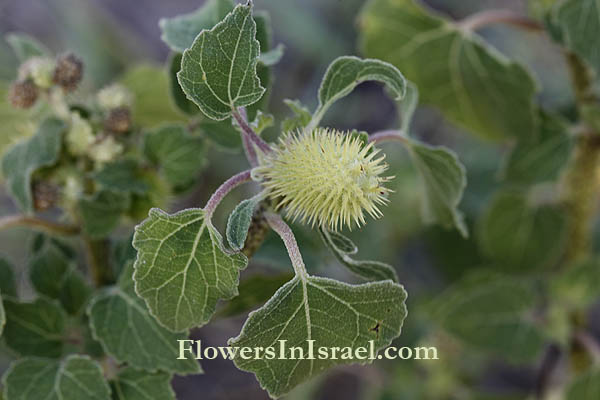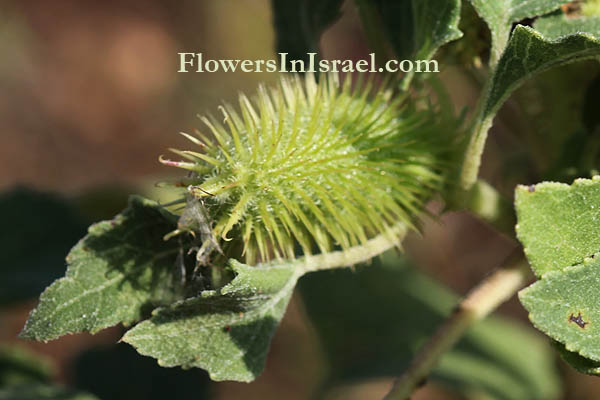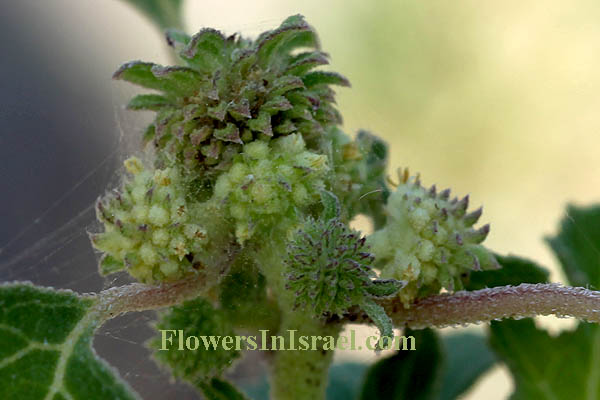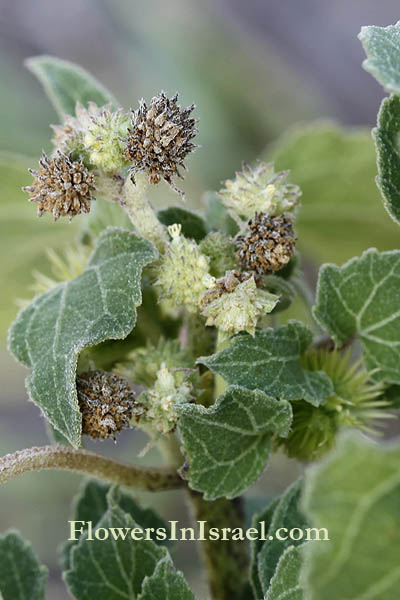Hebrew: לְכִיד הַנְּחָלִים, Arabic: اللزيق السلعي, Egypt: شبكه "Shabka"
| Scientific name: | Xanthium strumarium L. | |
| Synonym name: | Xanthium occidentale Bertol.Xanthium pungens Wallr. | |
| Common name: | Cocklebur, Rough Cocklebur, Broad cocklebur, Bur thistle, Burweed, Clotbur | |
| Hebrew name: | לכיד הנחלים | |
| Arabic name: | اللزيق السلعي | |
| Egypt: | شبكه "Shabka" | |
| Plant Family: | Compositae / Asteraceae, מורכבים |

Location: Netanya, the Dora rain pool |
| Life form: | Therophyte, annual | |
| Spinescence: | Fruits | |
| Stems: | Erect, usually much-branched, 30-120cm high, rough-hairy, often with lengthwise ridges and spotted | |
| Leaves: | Alternate, entire, dentate or serrate | |
| Flowers: | Small, green, inconspicuous, and unisexual | |
| Fruits / pods: | Seedpod; 2 seeds, usually 1 a bit larger than the other | |
| Flowering Period: | May, June, July, August, September | |
| Habitat: | Cultivated areas and disturbed habitats | |
| Distribution: | Mediterranean Woodlands and Shrublands, Semi-steppe shrublands | |
| Chorotype, טיפוס התפוצה: | American | |
| Summer shedding: | Ephemeral |

Location: Netanya, the Dora rain pool Derivation of the botanical name: Xanthium, from xanthos (Greek), "yellow," in reference to the seedpods which turn from green to yellow as they ripen (later they become deep yellow to brown). strumarium, Struma, "cushion-like swelling or tumour"; of or pertaining to tumors or ulcers; rough. The Hebrew name: לכיד, lacid, coherent; the fruits of Xanthium bear hooked spines on their seed coat that cling to the fur of animals who transport them to other locations before detachment (hence the name for coherent).
The fruiting head, densely covered by hooked spines, is 15-20 mm long. According to some authorities, the Cocklebur is perhaps the most annoying and painfully prickly, and for that reason, the most logical plant for the Hosea reference. Bible resources:

Location: Netanya, the Dora rain pool 
Location: Netanya, the Dora rain pool |